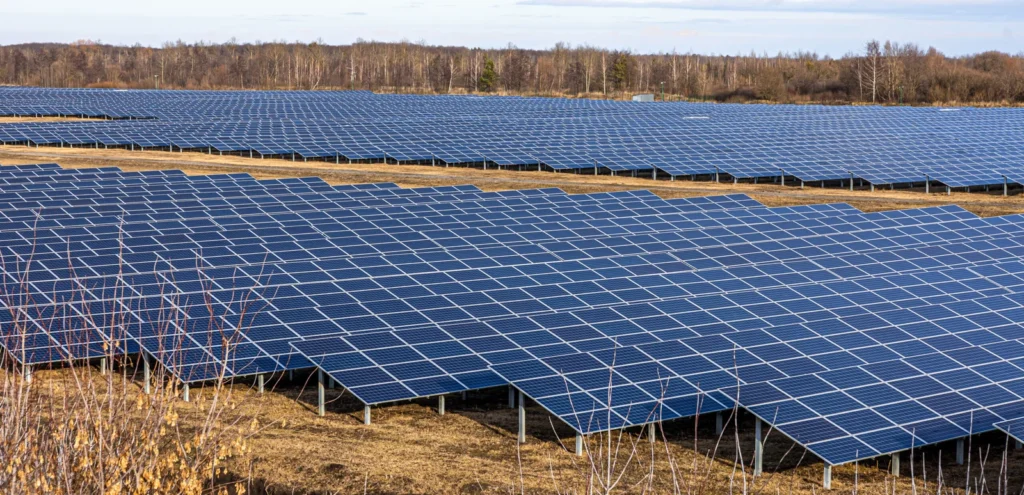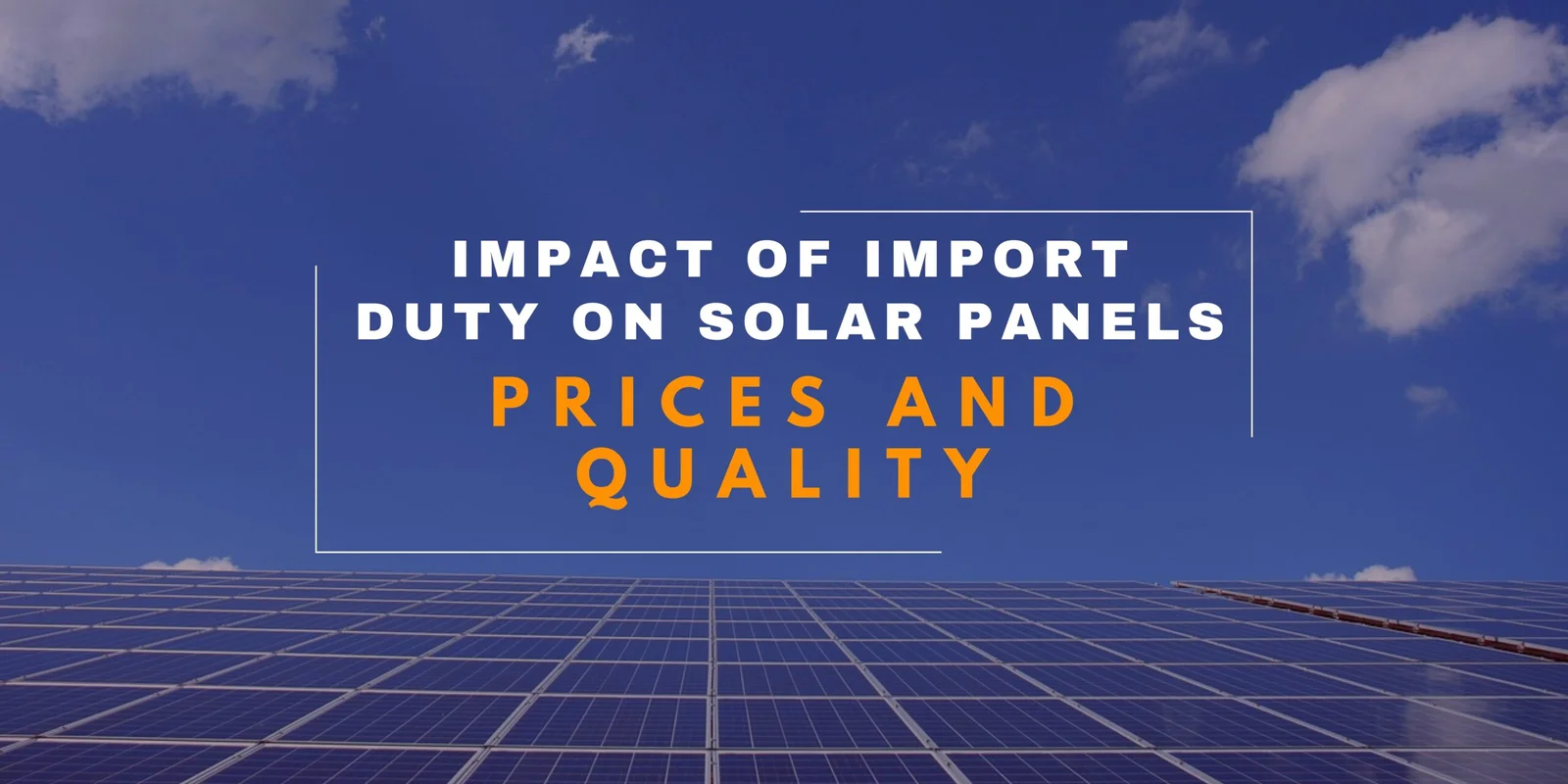India is rapidly moving toward clean energy, with solar power playing a big role. But in recent years, import duties on solar panels and solar cells have had a major impact on both prices and accessibility. These changes were made to encourage domestic solar manufacturing in India and reduce dependency on other countries—especially China.
This article explains how these duties work, the key changes from 2021 to 2025, and what they mean for homeowners, developers, and the future of solar energy in India.
What Are Import Duties on Solar Equipment?
Import duties are taxes added to goods brought from outside the country. For solar energy equipment, duties apply to:
- Solar panels (solar modules)
- Solar cells
- Solar inverters and supporting electronics
These duties directly impact the solar energy cost in India by raising the prices of imported items.
Import Duty Changes (2021–2025)

Here’s a simple timeline of recent policy updates:
- Until July 2021: A safeguard duty of around 15% was in place.
- From April 2022: Government introduced:
- 40% Basic Customs Duty (BCD) on solar modules
- 25% BCD on solar cells
- In 2025: An extra Agriculture Infrastructure Development Cess (AIDC) of up to 20% was applied to imported solar products.
These policies have significantly raised the solar panel cost in India.
Also Read Monocrystalline vs Polycrystalline Solar Panels in India 2025
Why Did India Impose Import Duties?
The government aims to:
- Promote the Make in India mission
- Reduce heavy reliance on Chinese solar panels
- Boost job creation and long-term investment in local manufacturing
- Encourage use of Indian solar brands like Waaree, Vikram Solar, and Adani Solar
The goal is to build a strong, self-reliant solar industry in India.
Impact on Solar Panel Prices
A major effect of these duties has been a clear solar panel price rise.
- Before 2022: Imported panels cost around ₹22–24 per watt
- After duties: Prices increased to ₹28–32 per watt or more
- Indian-made solar panels also became slightly costlier due to raw material price hikes
For example, a 3 kW rooftop solar system now costs about ₹1.8–2.2 lakh, compared to ₹1.5 lakh earlier.
Boost to Domestic Solar Manufacturing in India
Import duties have encouraged local manufacturers, including:
- Waaree Energies
- Vikram Solar
- Adani Solar
- Tata Power Solar
India’s solar module manufacturing capacity has increased from 8 GW in 2021 to over 60 GW in 2024. More factories are under development under the Production Linked Incentive (PLI) scheme.
These companies are producing high-quality monocrystalline and polycrystalline solar panels suited for Indian rooftops.
Key Challenges
Despite the growth in local production, there are still some hurdles:
- India continues to import raw materials like wafers and polysilicon
- Indian panels are still costlier than Chinese imports
- Higher solar equipment costs slowed down adoption in the residential sector
Rooftop solar installations have been particularly impacted by this solar energy cost increase.
Have the Duties Helped?
The result is mixed.
Positive outcomes:
- Sharp rise in domestic solar manufacturing in India
- More investment in local production of high-efficiency solar panels
- Reduced reliance on Chinese imports
Challenges:
- Increased prices for consumers
- Limited availability of domestic raw materials
- Underutilized PLI funds in some phases
India still needs to build a fully integrated supply chain to be fully self-reliant in solar manufacturing.
Impact on Indian Homeowners
For Indian households, these import duties bring both pros and cons.
Disadvantages:
- Higher cost of rooftop solar installations
- Slower adoption due to rising prices
Advantages:
- More reliable Indian solar panel brands
- Government support through rooftop solar subsidies
- Long-term savings on electricity bills
If you’re planning to install solar at home, now might still be a good time—especially with central subsidy schemes offering up to ₹78,000 per home.
Government Support Measures
To balance the impact of these duties, India has introduced several incentives:
- PLI Scheme with ₹24,000 crore budget
- ALMM (Approved List of Models and Manufacturers) to promote local solar panel makers
- PM Surya Ghar Yojana with heavy rooftop solar subsidies
These measures aim to bring balance between solar panel price rise and solar accessibility.
Future Outlook for Solar in India
India is targeting full solar self-reliance by FY2026. If successful, the following outcomes are expected:
- Stabilized solar panel prices
- Reduced need for imported equipment
- Wider adoption of rooftop solar systems
- Increased trust in Indian-made solar brands
The long-term result would be lower costs and a cleaner, energy-secure India.
FAQs – Import Duties and Solar Costs in India
Q1: What is the current import duty on solar panels in India?
As of 2025, 40% Basic Customs Duty on modules and 25% on solar cells, with an extra cess up to 20%.
Q2: Why are import duties imposed on solar panels?
To support local solar manufacturing, reduce dependency on foreign panels, and promote the Make in India initiative.
Q3: Has solar panel price increased in 2025?
Yes. Import duties and raw material costs have led to a 15–30% rise in prices.
Q4: Are Indian solar panels cheaper now?
Not yet. Indian panels remain a bit costlier but are improving with higher production and support schemes.
Q5: Should I install solar now or wait?
If you can use available subsidies, now is still a good time. Delaying may not guarantee lower prices.
Conclusion
The impact of import duties on solar equipment in India is shaping the way solar energy is adopted and priced. While it has led to short-term price increases, it is building the foundation for long-term energy independence and a robust local solar industry.
For homeowners, the decision to go solar now still makes sense—especially with growing electricity bills and government incentives. The next few years will determine whether India’s move toward solar self-reliance succeeds, and these duties play a key role in that journey.
Author- Ayush











